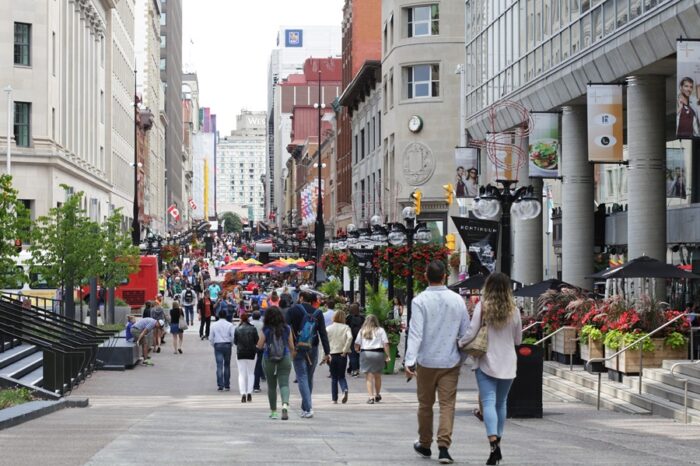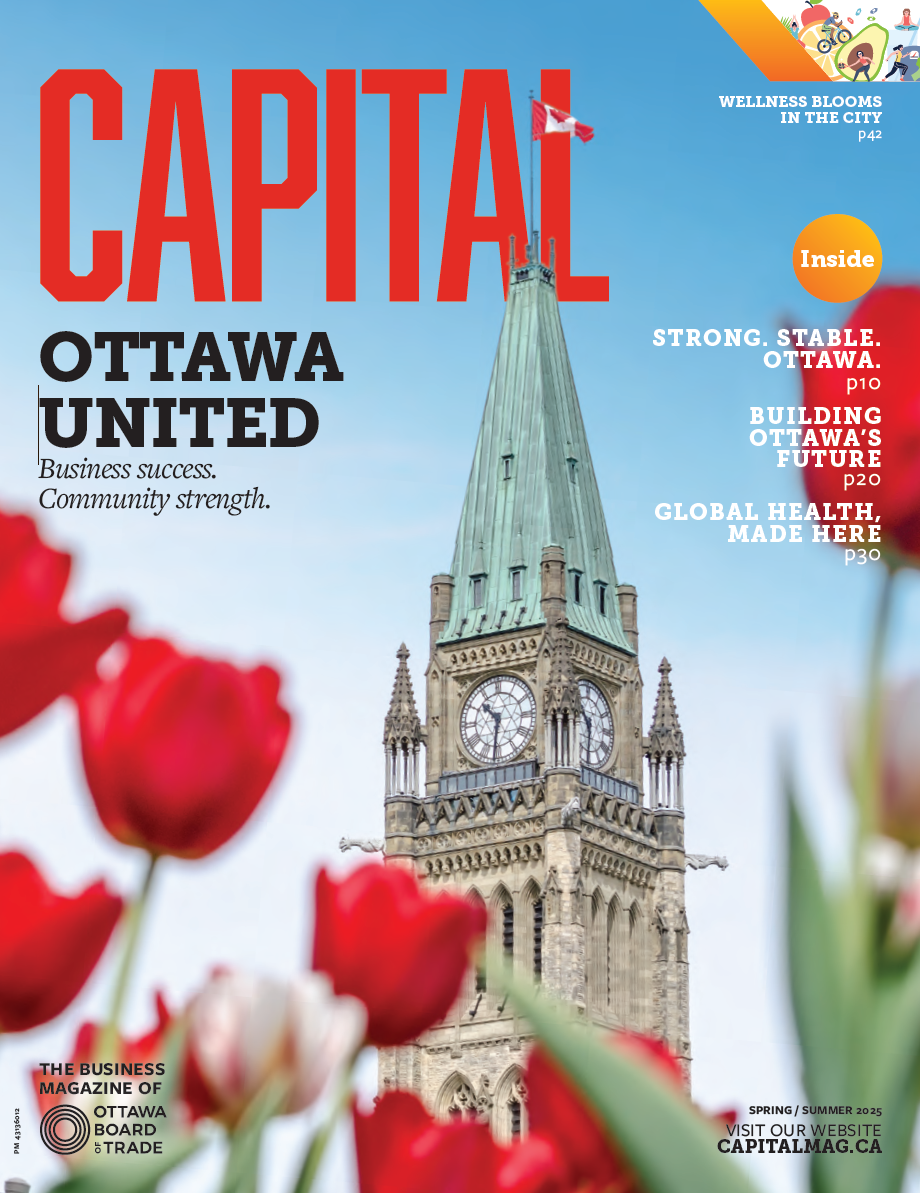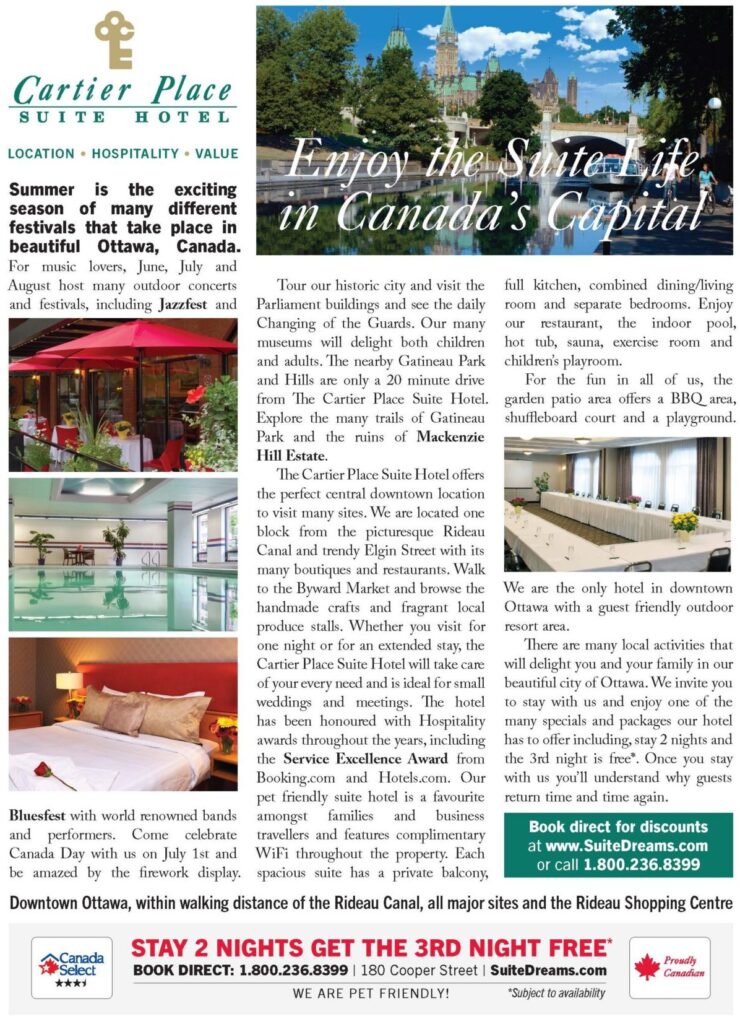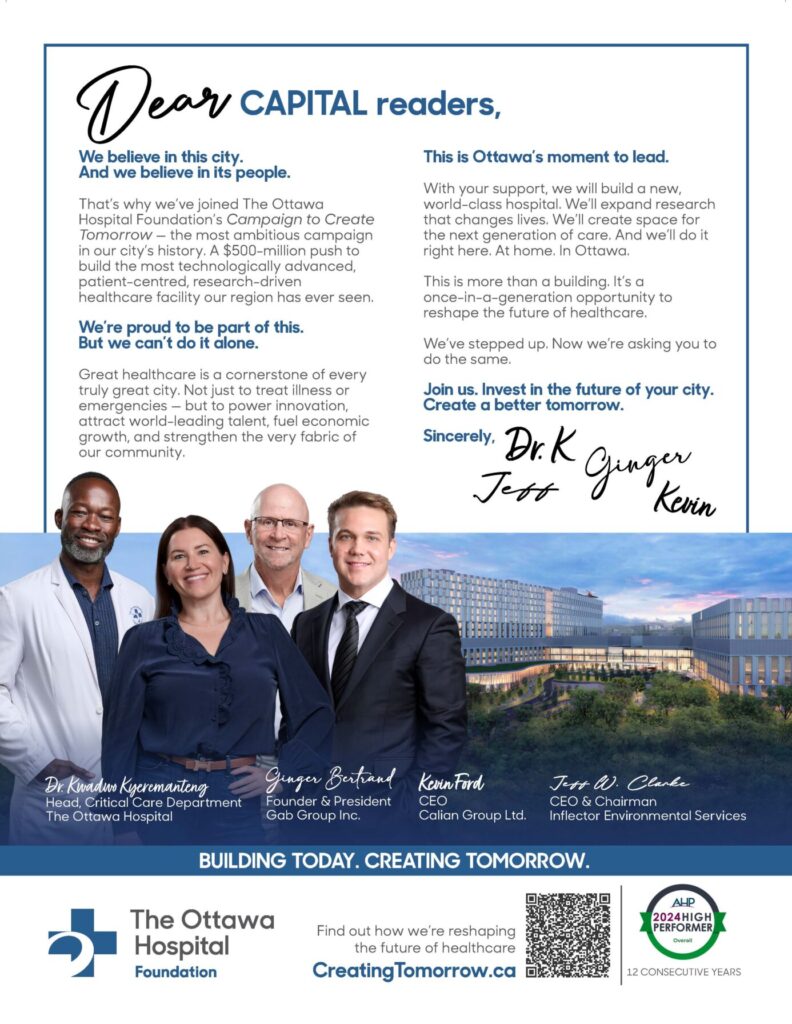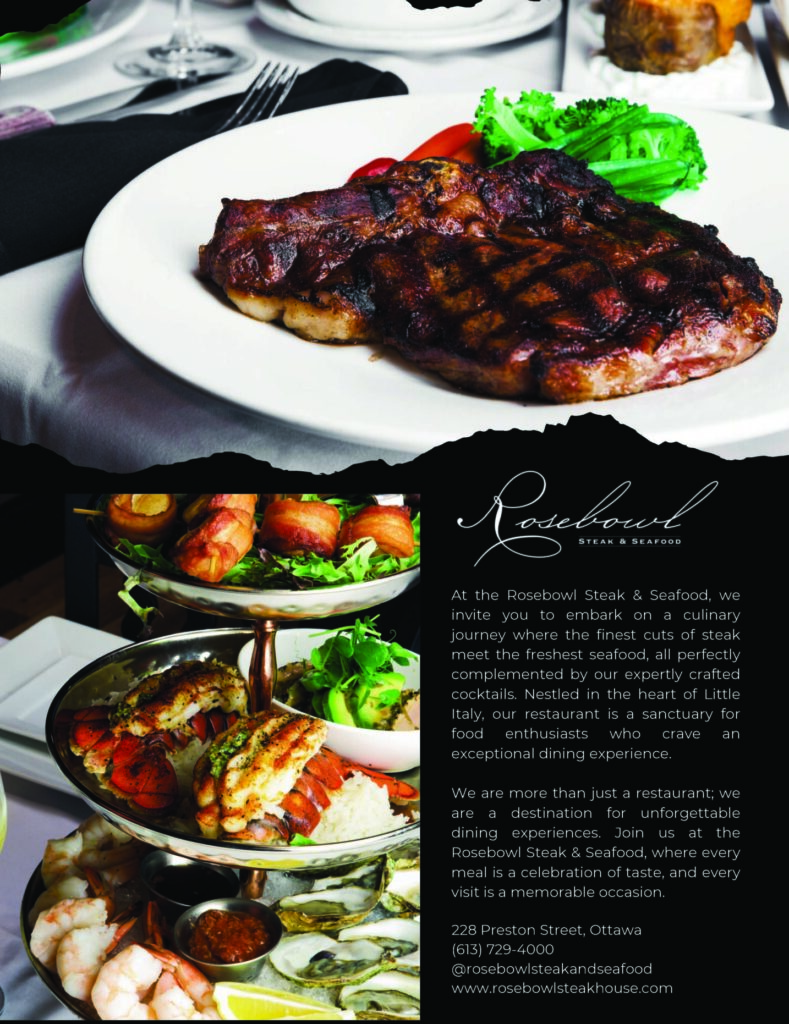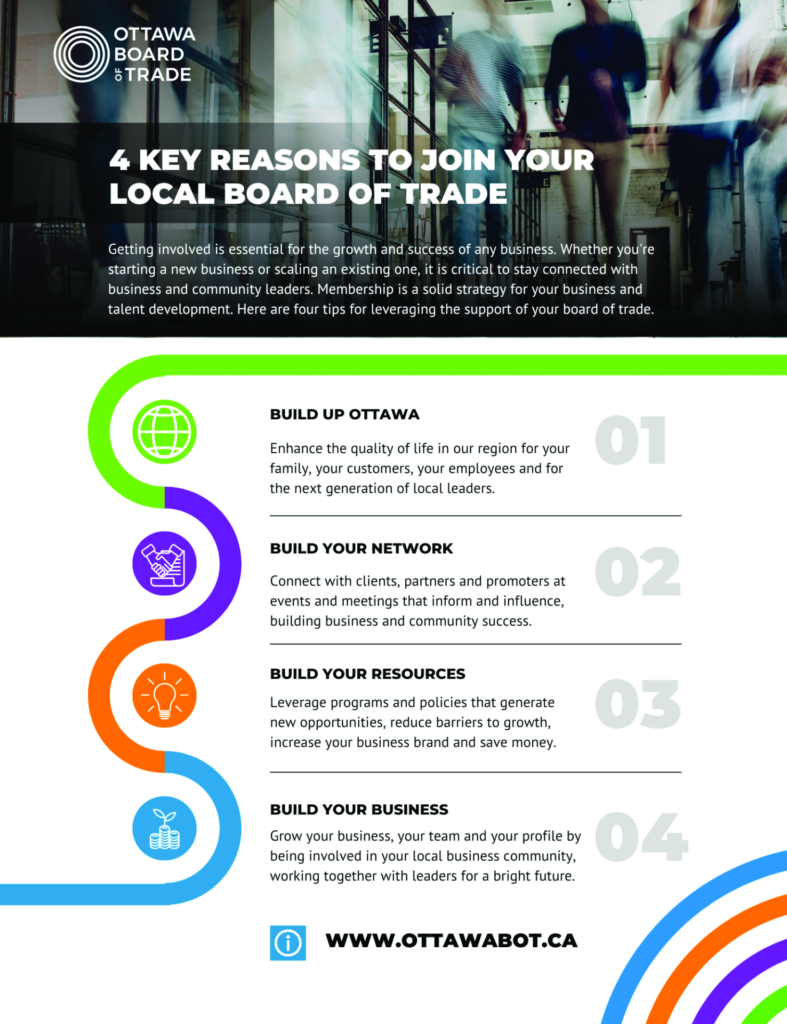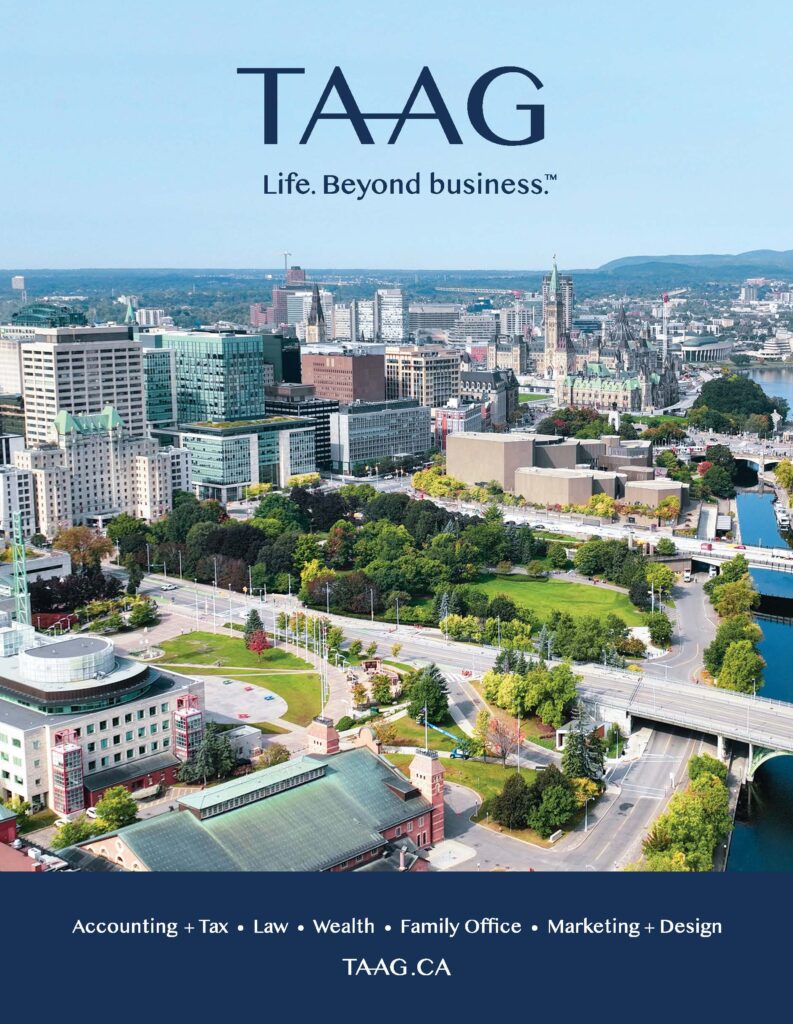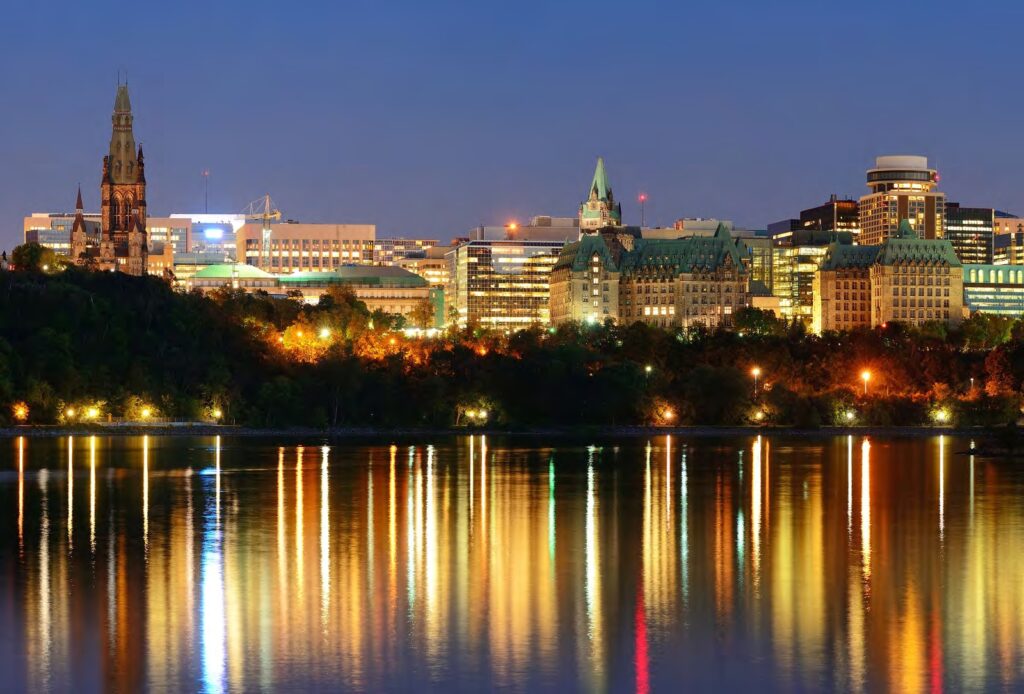A City With it All
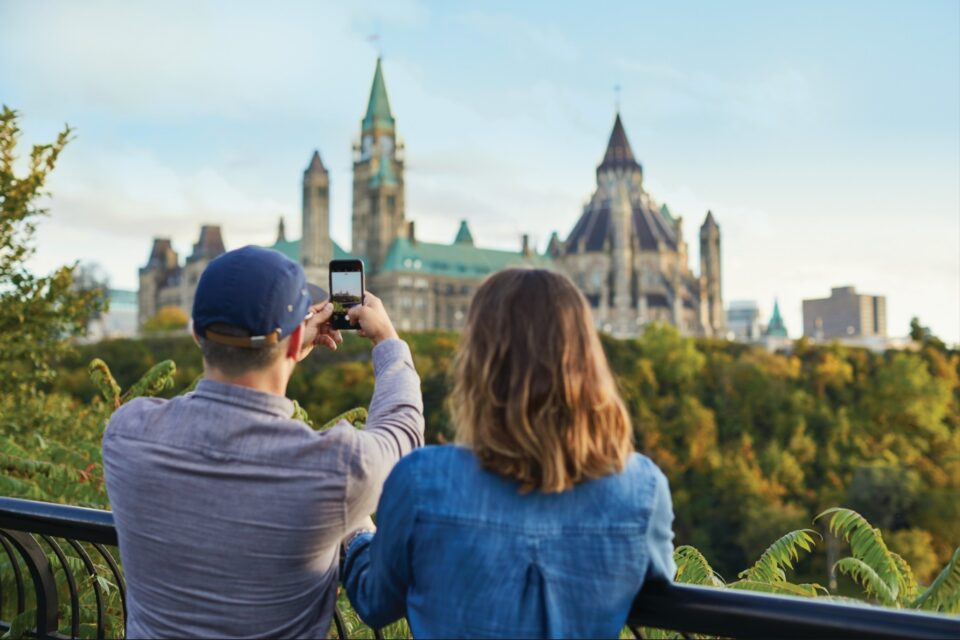
BY JENNIFER CAMPBELL
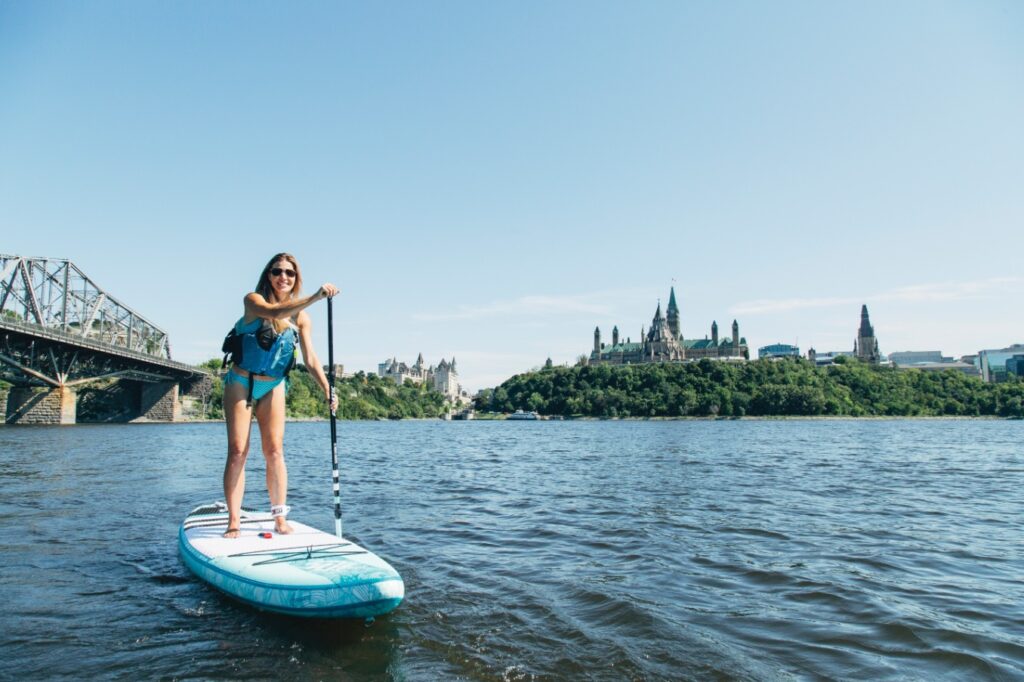
OTTAWA IS A WORLD-CLASS CAPITAL in a relatively small package—at least population-wise, where we fall 90th on the list, well above our Australian counterpart of Canberra, but well below the Top 10, which all have populations in excess of nine million. But that’s part of Ottawa’s charm as is how the city punches well above its weight culturally and in terms of its natural beauty.
Nestled between two rivers, Ottawa offers water sports in the summer and ice sports in the spring. And Gatineau Park, just to the north of the city, is a year-round natural sanctuary with a fall rhapsody of colours, winter skiing and summer swimming. Climate change notwithstanding, Ottawa’s world-famous Rideau Canal touts itself as the longest skating rink in the world. And then there are the region’s seven national museums—the Canadian War Museum, the Canadian Museum of History, the Canadian Museum of Nature, the Canada Aviation Museum, the Canada Agriculture and Food Museum, the Canada Science and Technology Museum and the National Gallery of Canada.
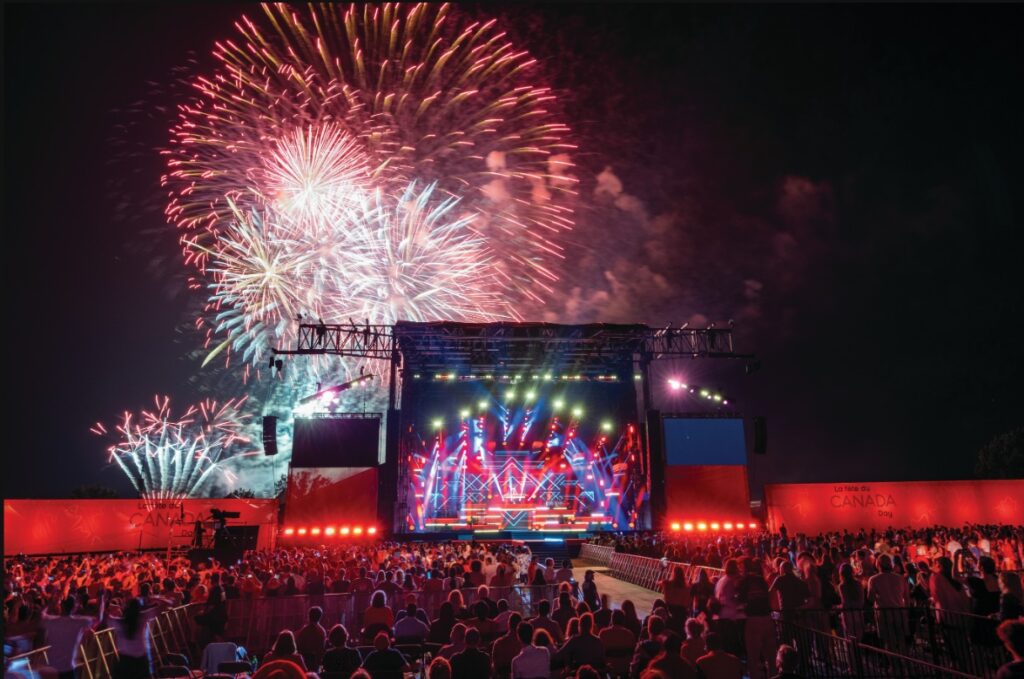
“We are not a 1,000-year-old city like Paris, London and Tokyo, and we are not be biggest city in our country, as is the case with those [capitals], but other capitals, like Washington, D.C., are not the biggest city in its country either,” says Alain Miguelez, vice-president of capital planning and chief planner for the National Capital Commission, who prefers to stress what Ottawa is, rather than what it is not. “We are a G7 capital, we are the size of Copenhagen, Amsterdam and Dublin; we are the size of cities that have very much a good identity and personality in the world, and I think it’s up to us to say so, and to take our space under the sun as such.”
Miguelez says the national institutions and the formal side of any capital city are still what draws many people here, but he adds that Ottawa is now a big enough city that it has lots of music, art and culture outside of those anchors; it has neighbourhoods with their own personalities and vibes and it has top-tier sports teams such as the CFL’s Ottawa Redblacks, the NHL’s Ottawa Senators and the Canadian Premier League’s Atlético Ottawa.
“And you can think back to the [sesquicentennial] celebrations, where the city really shone with events like Red Bull Crashed Ice, La Machine and Kontinuum,” he says. “We are now a city that hosts major events—major sporting events, major tournaments, major cultural events. We are very much noted for that, and that’s part of what attracts people to Ottawa. And of course, Canada Day is also a big calendar marker for many Canadians; it should be for all Canadians. It should be a point of pilgrimage for every Canadian to be in Ottawa for Canada Day at least once in their life.”
Tourism magnet
In addition, Ottawa is a major tourist draw for international travellers and for Canadians who live outside the capital. “As Canada’s capital, Ottawa is home to so many cultural attractions, whether it’s museums; galleries; other cultural attractions; accessible, walkable streets and beautiful meeting venues,” says Catherine Callary, vice-president of destination development at Ottawa Tourism. “So, it’s really, truly a place that allows all Canadians to see their parts of Canada reflected in the city’s urban fabric through its thriving cultural scene, historic landmarks, national museums, its wide-open green spaces and parks and just that vibrancy and the diversity of our neighbourhoods and residents. That’s, at the core, what is so appealing to visitors, and what makes [Ottawa] a world-class destination.”

The tourists who flock to the city express their appreciation with their visits and their dollars.
“We have 9.8 million visitors to the city every year that are coming to Ottawa for a variety of reasons,” Callary says. “They generate big economic returns for the city by spending $2.6 billion annually on things like accommodations and food and beverage and attractions, transportation and tours and festivals and retail and a whole bunch of other things. This visitor spending also generates tax revenues for all three levels of government.”
Ottawa Tourism’s study on the economic impact of the sector found that those tax revenues add up with $900 million, meaning that [some of] the government services that support our everyday lives in Ottawa are actually being supported by tourism.
“That’s $2,000 per household of tax burden that tourism helps to alleviate for residents, which means that the success in our city of tourism really does benefit each and every resident, personally,” Callary says. “Otherwise, we would have to come up with the $2,000 per household somewhere else. These are dollars people are bringing in from outside of Ottawa and leaving here, helping to propel livelihoods.”
In addition, the sector supports 35,000 people working in tourism related industries.
Miguelez says the city is full of people who come here to study from Montreal and Toronto and race back to their hometowns every weekend, until, eventually, they realize they’d rather be here. “A lot of people start with studies and stick around because it’s a good place to be,” he says.
“The city grows on you. It’s a city with a personality that kind of doesn’t give itself up right away. You have to make the effort to discover it and put the work in and believe in it. It will frustrate you in some respects, but it will reward you in many others.”
Miguelez also stresses the national capital region’s uniqueness in that it sits on the border of Canada’s two biggest provinces.
“It has that ability to offer two very varied cultural experiences,” Miguelez says. “Quebec and Ontario are two very different places, each with their own personalities and offerings and vibrancies. And we are now looking for opportunities for Indigenous expressions of culture, culinary arts and other manifestations to take their place in the nation’s capital.”
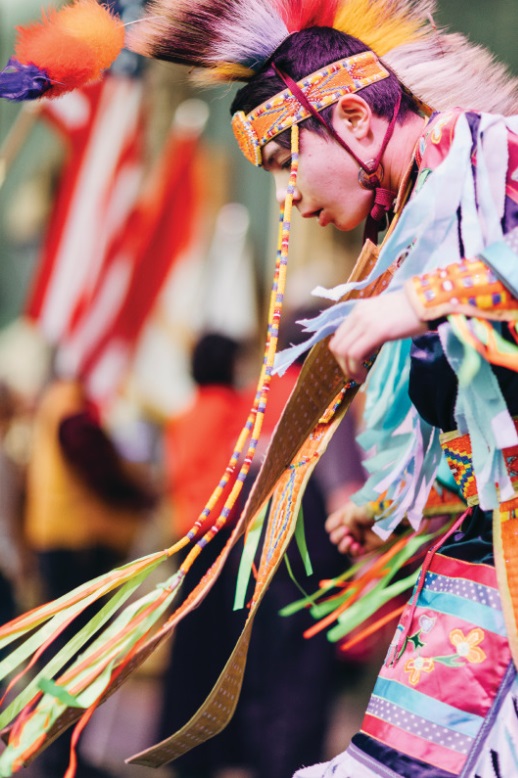
One such manifestation is Mādahòkì Farm, a place with a mission of sharing the land, stories and food from an Indigenous perspective.
Jet-setters’ home base
Caught between two of Canada’s largest cities, the Ottawa/ MacDonald-Cartier International Airport has few non-stop flights to Europe and lost its two—to London and Frankfurt—during the pandemic. But post-pandemic, the city gained its first-ever non-U.S. foreign-flagged flight in decades when Air France started flying from Ottawa to Paris.
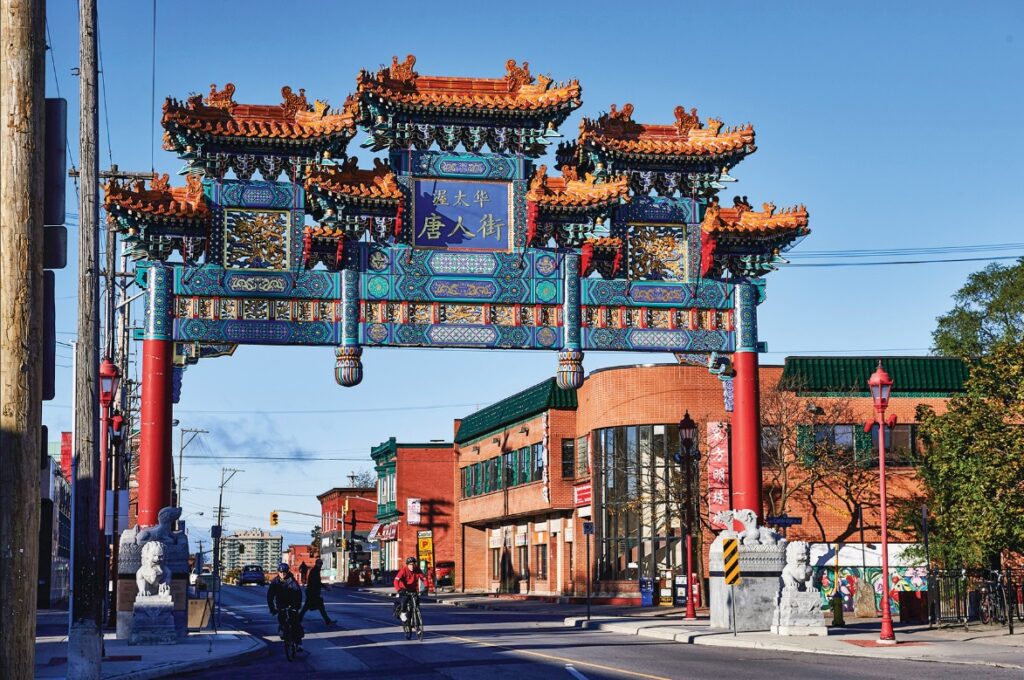
“Right now, the feather in our cap is Paris,” says Joel Tkach, vice president of business development and marketing for the Ottawa International Airport Authority.
And, Tkach says, Air Canada will resume its non-stop flight to London-Heathrow, beginning March 31, four times weekly, at least for the spring and summer season.
Air Canada’s appetite for a lot of trans-Atlantic flights from Ottawa is low because it prefers to have Ottawans fly to Montreal or Toronto and then overseas. That said, there are plenty of “transborder” non stop flights to the U.S. and in the winter, it has lots of flights to sunny destinations such as Cuba, Mexico and Dominican Republic. Non-stop flights are attractive to the city’s many ex-pats and to the diplomatic corps stationed here, which, with family members, numbers approximately 5,000. The diplomats, says Larry Lederman, Canada’s former chief of protocol and a retired ambassador, add much to the community.
The diplomats also add a cosmopolitan air to the city, Lederman says.
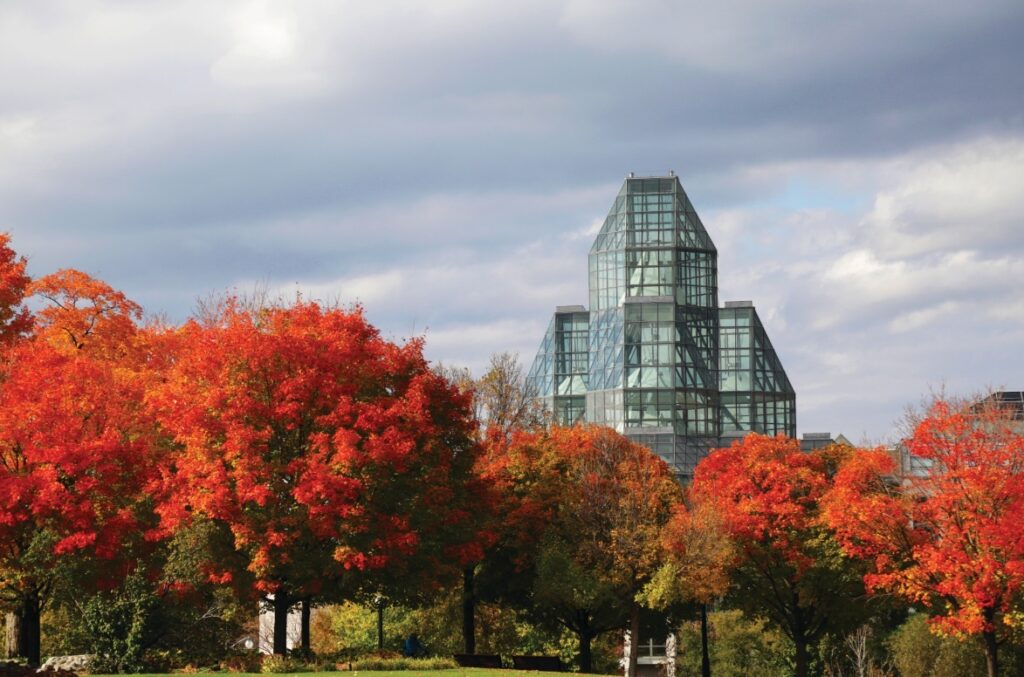
“Many of them hold their national days often at [event spaces] such as the Westin Hotel or the Chateau Laurier,” he says. “They also hold cultural outreach events.” The Japanese embassy, for example, hosts regular ikebana presentations and in October, it hosted a koji workshop with a master chef. The Korean and Austrian embassies both have full wings dedicated to cultural outreach.
Quality of life
One of Ottawa’s key differentiators, says Sonya Shorey, president and CEO of Invest Ottawa, is its quality of life.
“We have some of the most amazing big-city attributes with a beautiful, small city, neighbourly feel that’s collaborative, diverse and inclusive,” she says. “We’re multicultural, we’re welcoming, we’re kind. [But], we bring great big concerts and festivals, we have incredible outdoor activities and we attract amazing conferences. This is a place where you can have an incredible life in addition to an incredible career.”

Shorey says the city’s thriving tech sector anchors its knowledge based economy and she says our talent is one of Ottawa’s greatest strengths.
“We have the top tech talent concentration in all of North America for the fifth year in a row,” Shorey says, adding that Ottawa tied with San Francisco this year. “Our tech talent concentration is still one of the greatest attributes and strengths that we can bring to bear as a region as Canada’s capital and as a G7 capital, and it’s something that I think creates generations of value and impact.”
